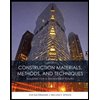Explain the various features of the attraction-bonding.
Explain the various features of the attraction-bonding.
Ionic bond, also called electrovalent bond, the type of bond formed in a chemical compound from the electrostatic attraction between oppositely charged ions. Such a bond forms when one atom's valence (outermost) electrons are permanently passed to another atom.
Various features of the attraction-bonding or Ionic Bonding are :
-Along with covalent bonding and metallic bonding, it is one of the major forms of bonding.
-In order to achieve a complete shell of valence for both atoms, an ionic bond results from the movement of electrons from a metal into a non-metal.
-When molten or in solution, ionic compounds conduct electricity, usually not when solid .
-Depending on the charge of the ions they consist of, ionic compounds usually have a high melting point.
-The greater the charge, the higher the cohesive forces, and the greater the point of melting.
-In water, they also tend to be soluble; the greater the powers of cohesion, the lower the solubility.
-When atoms of an element (usually metal) whose ionisation energy is low give some of their electrons to achieve a stable electron configuration, ionic bonding may result from a redox reaction. Cations are created by doing so. The electron(s) are accepted by an atom of another element (usually non-metal) with greater electron affinity to achieve a stable electron configuration, and an atom becomes an anion after acceptance of the electron(s).
-Ionic bonding can only occur if the total energy shift is beneficial to the reaction.
Step by step
Solved in 3 steps with 1 images






